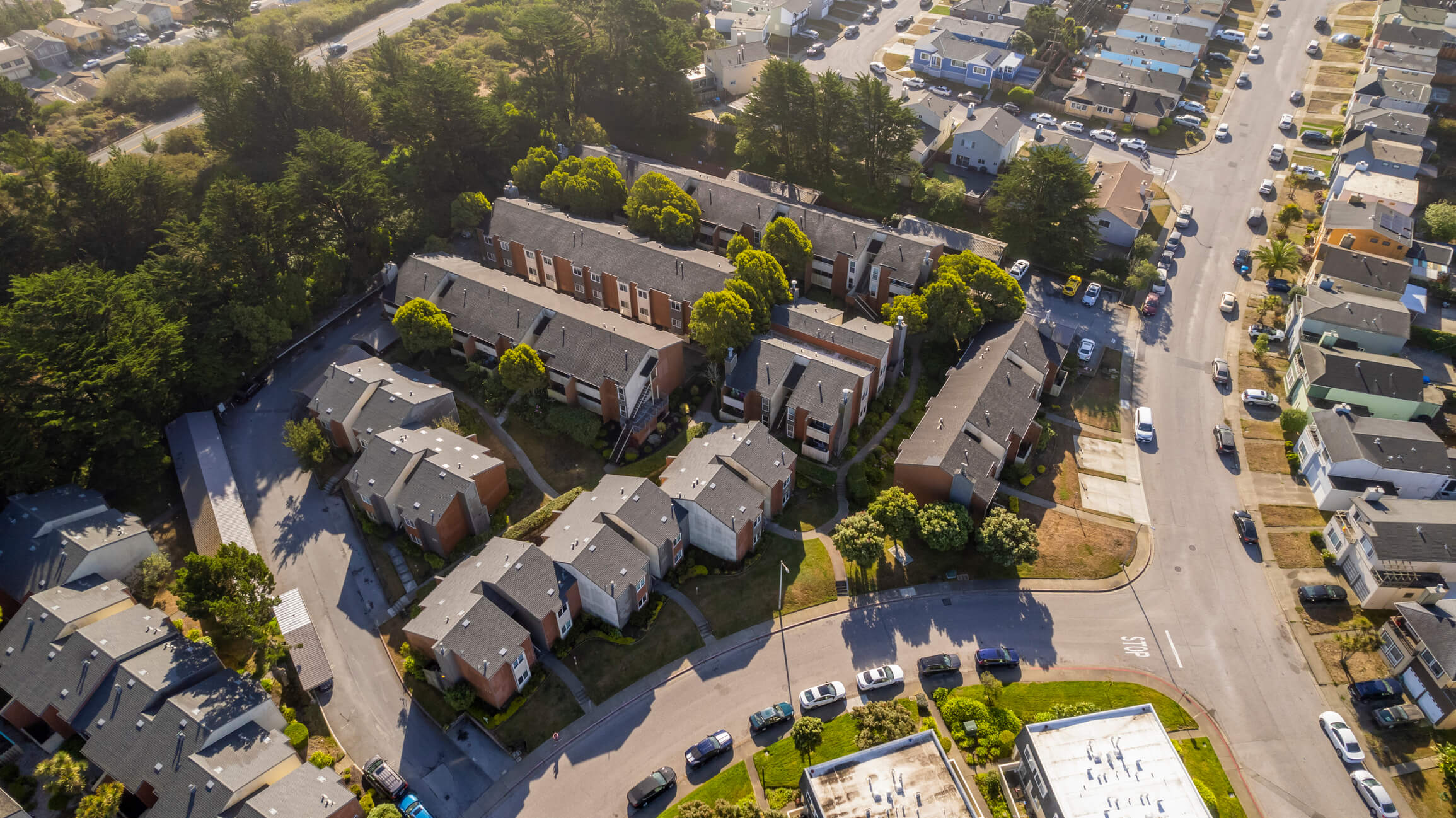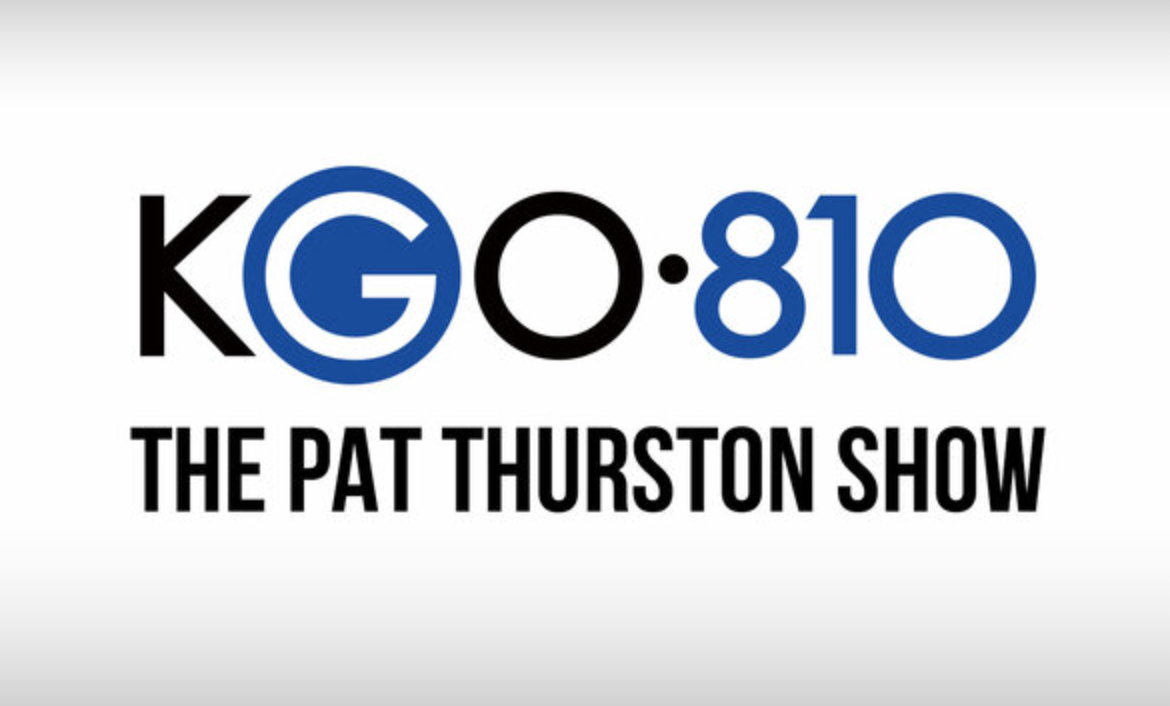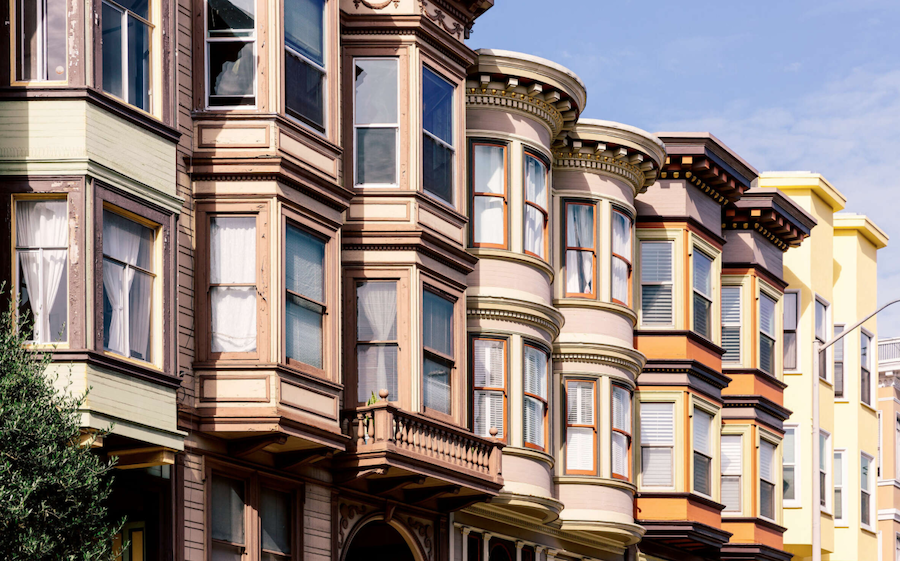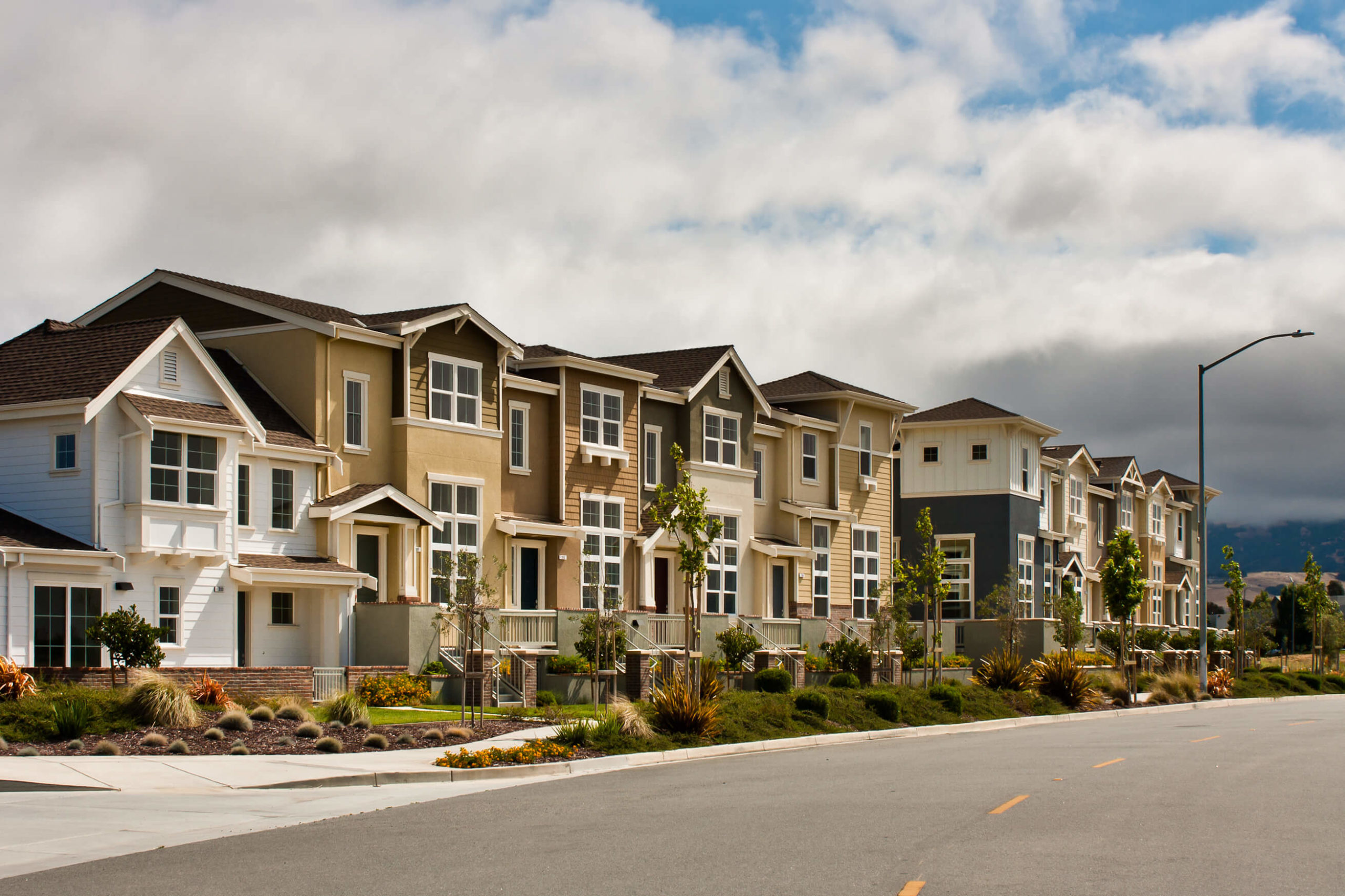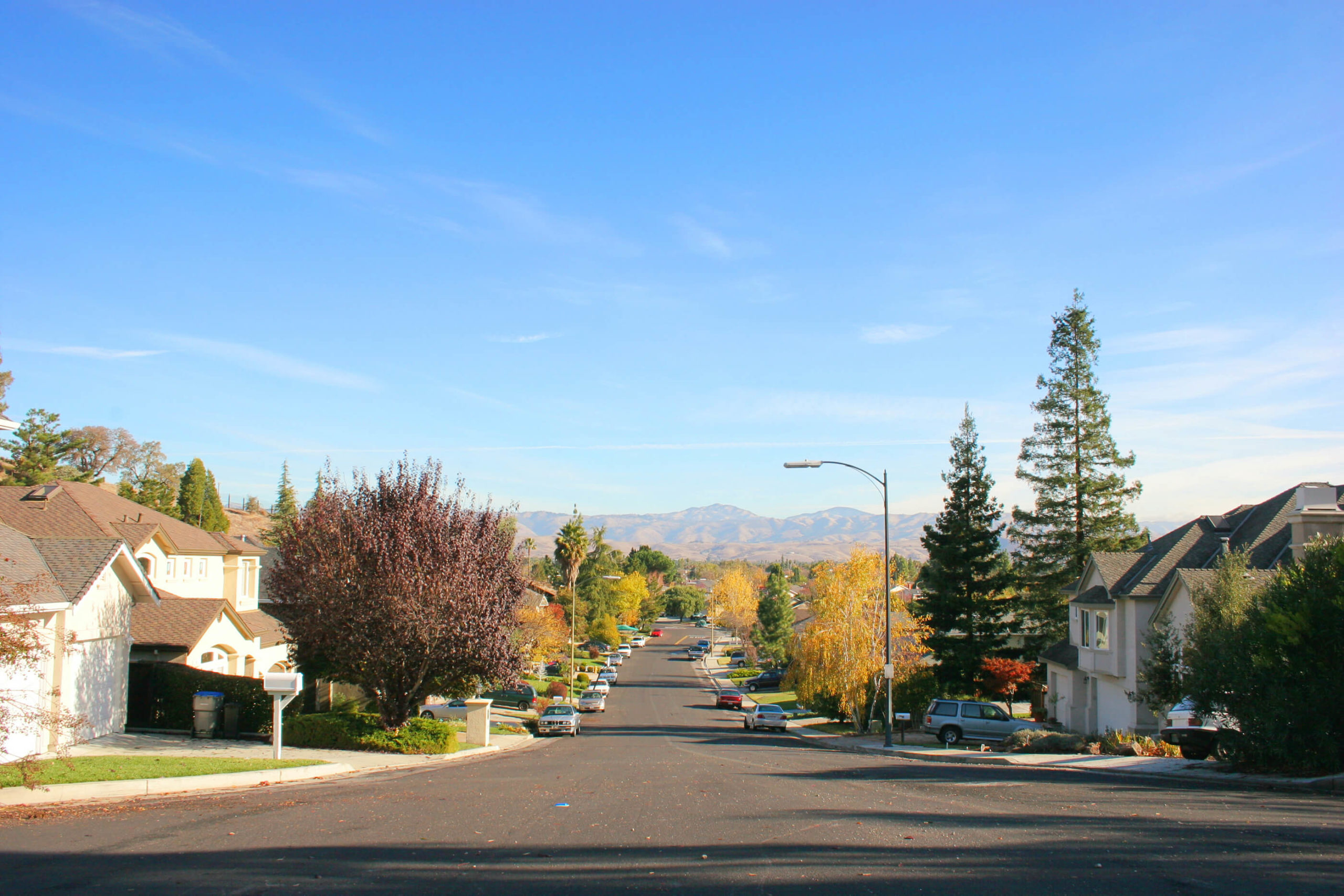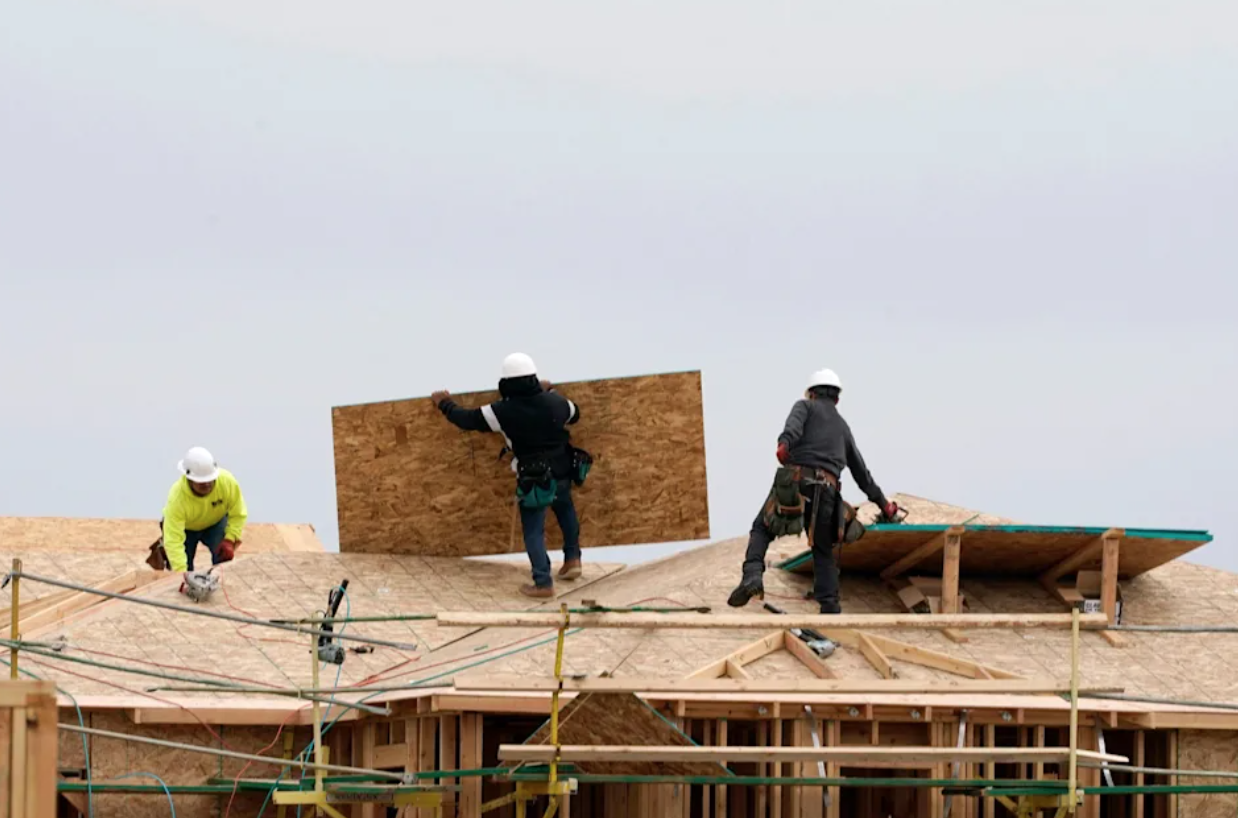L.A. developer brings new approach to shared ownership, which once raised uproar
By Andrew Khouri
A new housing model that landed in Los Angeles several years ago made home ownership more affordable in pricey neighborhoods, a welcome option in a housing-starved region.
It also had a major flaw, according to critics: Investors often displaced tenants in cheaper rentals to renovate their units and resell them.
Now, an L.A. developer has a new approach to the so-called tenancy-in-common, or TIC, model, in which residents share ownership of the property. Instead of converting old, rent-controlled buildings into TIC properties, the developer is replacing single-family homes with new townhomes.
That adds less costly housing stock to the area with fewer chances of displacement since most single-family houses are owner-occupied.
“I thought this wasn’t something I could afford,” said Ricky Howard, a 34-year-old buying his first home, a three-bedroom townhouse in Arlington Heights with stainless-steel appliances, quartz countertops and central air conditioning.
“I was … questioning why was it priced at $749,000,” he said, “and it’s new construction.”
At TIC developments, rather than own an individual unit on a lot like a condominium, residents own a share of the overall lot and have exclusive rights to live in their unit, with homeowners association dues covering the property’s upkeep. They are similar to New York City co-ops and came to L.A. from San Francisco, where they had been budding for decades.
B&A Group, the builder of the four-unit project in Arlington Heights, has several more on the way, and at least one other developer is planning similar projects. Some real estate experts said the model could make a dent in the region’s gaping affordable-housing problem, particularly after a new state law opened more areas to similar development.
B&A has finished three projects so far; the others are in West Adams and Westlake.
In Arlington Heights, the three-bedroom homes went up for sale between $749,000 and $849,000 — at least $159,000 less than the typical three-bedroom home in the central Los Angeles neighborhood, and cheaper than most newly built condos and townhomes in the city, according to a Times analysis of Zillow data and listings.
Aldo Cali, who runs B&A with his sister Brisa Acosta, said they focus on replacing single-family homes with new construction because they don’t want to displace anyone. And it’s hard to make projects work financially when demolishing multi-unit structures to build just a few new units.
The new TICs from B&A preceded Senate Bill 9, the state law that allows up to four units on most lots formerly zoned for one single-family house. Some single-family houses in the city already saton parcels zoned for more units, often a maximum of four, enabling projects such as B&A’s.
“Being able to take one home and turn it now into four homes that could give someone the opportunity to own a home in Los Angeles … we like that whole idea,” Acosta said.
In the debate over the new construction enabled by SB 9, some opponents raised concerns developers would demolish relatively affordable single-family homes and replace them with expensive rentals.
Cali and Acosta said the old homes they buy often need significant work that would put them out of reach for many first-time buyers. Most of the new TIC townhomes, on the other hand, have sold to first-time buyers, according to the real estate agent handling the deals.
Except for one single-family house built as part of a three-unit TIC development in West Adams, B&A’s new townhome units are all three bedrooms with roughly 1,500 square feet and a rooftop deck or a small yard.
All 10 of those townhomes were first listed between 9% and 26% less than the typical price for a three-bedroom in those neighborhoods, or the equivalent of $81,000 to $259,000 cheaper.
New homes at a discount
Howard, who is under contract for a unit at the TIC project in Arlington Heights, said he had grown tired of paying $3,000 a month in rent for a one-bedroom apartment near work and wanted to start building equity.
The owner of a streetwear store in downtown L.A. said the only homes he could afford in his desired neighborhoods were fixer-uppers, or one-bedroom and studio condos. It took six months of searching and roughly three lost offers before he came across B&A’s townhomes.
One home he had bid on had 20 competing offers, he said. By comparison, buying a newer, nicer TIC has been a breeze.
“I think it’s smart for when I get older,” Howard said, of owning an asset rather than renting it. “I can have something that I own.”
How his opportunity came to be is a story of zoning and economics.
In recent years, developers including B&A have demolished single-family houses that sat on L.A. lots already zoned for two to four units.
According to interviews with developers and a Times analysis of city records, the hundreds of new two- to four-unit projects that developers built were primarily for lease, with just a smattering of for-sale condos and a type of for-sale housing known as small lots — homes that look like townhomes but are actually detached single-family houses.
Some of the new rental units were pricey, high-end units, while others were cheap enough to qualify as Section 8 housing.
Most projects are rentals because it takes too long to get city approvals to sell units individually as condos or small lots, developers said. By 2019, though, investors had started to convert old rental housing into TIC units, which unlike small lots and condo conversions required no special city approvals and could be done quickly — a major plus for them since time is money.
L.A. real estate agent Skyler Hynes, who was working with B&A at the time to lease rentals, said he and the developer figured they could use that new model to sell off individual townhomes and potentially make more money than selling an entire property to a landlord.
Cali said they bought all houses on the open market and made a point of asking the listing agents whether anyone would be displaced by the sale, something he said the agents said wouldn’t happen.
“That’s not what we are about,” he said.
According to county records and an interview with one previous owner, at least five of the seven houses B&A bought had been owner-occupied. One house had been rented before the sale, according to the tenant, who said the landlord let him move into another rental she owned for the same rental price.
Multiple industry insiders believe B&A was the first developer to offer newly built TICs in the L.A. market, with others since taking up the model.
Isaac Davidi, a prominent developer of two- and four-unit rentals in Los Angeles, said he has about 40 new TIC buildings planned, with the first one expected to be finished in West Adams in about three months. “It’s more profitable,” he said.
Future B&A projects are plannedin West Adams, Westlake, Mid City and North Hollywood.
All of the townhomes B&A has finished so farwere listed and sold, or are still available, in the $700,000s and $800,000s. Hynes said the list price is roughly a 10% to 20% discount to what a similar newly built condo or small lot would cost in that location.
Several B&A homes actually sold for less than the original list price, including the one Howard is buying.
B&A can still make a profit selling the homes at a lower price: The developer saves time because special city approvals aren’t necessary in TIC cases, Hynes said.
The particular features of TICs — the shared ownership structure, for example, and the lack of fixed-rate financing options for them — also mean they aren’t swamped with buyer-interest the way most California homes are these days.
Adding supply
If newly built TICs prove reasonably profitable for developers, and the model takes off, it could have a “substantial impact” on improving housing affordability, UCLA professor Paavo Monkkonen said.
As developers build more TICs, more for-sale units will become available — the supply will grow — potentially easing the bidding wars between buyers that characterize today’s market.
SB 9 has also opened up many more lots to two- and four-unit development, adding opportunities for others to try the single-family-home-to-TIC pathway.
Larry Gross, executive director for the tenant rights group Coalition for Economic Survival, said the way B&A is developing TICs has the potential for less tenant displacement compared with the more common rental conversions.
But if the model catches on, he said, he worries other developers will pressure low-income homeowners to sell en-masse, then build and sell homes for far more than B&A prices. A familiar cycle would then begin, he said, with high-earners moving in and driving home prices up further.
“This could be devastating,” he said.
Even the discounts B&A’s projects now offer are a concern for Steven Meeks, president of the neighborhood council for West Adams. The area has seen prices skyrocket in recent years as higher-income, often-white households move into the mostly working-class Latino and Black neighborhood.
“Cheaper for who?” he said of the new townhomes. “What person in this neighborhood is going to afford that?”
Cali said he worries “about everybody’s concerns,” but he feels his projects are helping affordability, including in West Adams, where he sold two three-bedroom townhomes for $780,000 and $795,000, far less than the typical three-bedroom now valued at more than $1 million.
“It’s bringing back a little piece of the middle class, figuring out how to even get into something,” he said.
UCLA’s Monkkonen said it’s important to consider what could’ve happened absent B&A’s purchase of the old houses: It’s common for investors to purchase old, rundown homes and renovate them to much higher values — something that doesn’t add any additional units and happens frequently in West Adams and across the city.
B&A’s projects, meanwhile, are adding housing that is cheaper than many options in the surrounding area, a quicker way to expand affordability than waiting for more supply to trickle down, Monkkonen said.
All but one of the 10 new townhomes B&A has built can be considered less expensive than the old houses they replaced, records show. According to public records, B&A paid $850,000 in 2019 for the single-family house in Arlington Heights it demolished to build four townhomes.
Those four new townhomes went on the market between $749,000 and $849,000, meaning all four were available for less than B&A paid for the original house two years earlier. Some buyers are in escrow below those list prices, an even steeper discount.
It’s a more complicated case with the developer’s other projects. Those townhomes sold for more than what B&A paid in 2019 for the houses they replaced. But as any observer of the nation’s housing market knows: real estate appreciates.
A home’s price doesn’t rise in exact tandem with the market. But if B&A never demolished the old houses and their value climbed exactly as estimated by Zillow for the typical house, all but one of B&A’s six remaining townhomes sold for less than the theoretical value of the houses they replaced.


